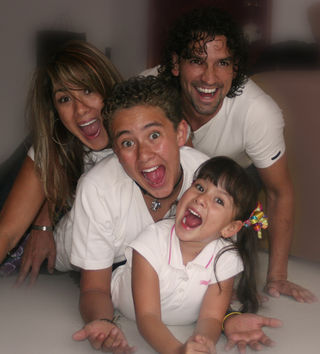Sleep
13 Fast Ways to Turn Moments of Home Time Into Quality Time
Boost your family's communication quotient in little bits of time, effortlessly.
Posted June 13, 2020

Whether everyone in the family is (still) stuck at home for long days, or you're all back to going your own separate ways, staying emotionally connected as a family is not always automatic.
Aim for brief, yet numerous, interactions. When they are spread out, the warm feelings continue all day long and make the best memories.
Choose times and places where you and your youngsters are relaxed and not too sleepy or hungry. Some kids freeze up if you set a particular time for talking. Try some of the activities below while you and they are also doing something else (but not when any of you are attached to a screen). Be sure each child has his or her own connecting-to-you time.
Kids need to feel safe to open up. Don’t be critical or tease your child for sharing, and don’t harp on grammar or spelling in notes. Listen, rather than ask a lot of questions.
Quick Anytime Connections
Squeeze of Love. Design your own way of showing love-in-a-hurry: a special hand squeeze, a wiggle of three fingers in the air, a particular set of eye blinks, blowing kisses from each finger.
Personal Toast. Even if your family’s breakfast is barely a speedy blur on the day’s horizon, take turns giving a personalized toast. Clink juice glasses and say, “Here’s to Josie’s arithmetic test!”
Our Song. Agree on a song that will be your family’s song (for the month or for keeps). Say you heard a particular song the day you moved into your new home. Whenever you hear it, call out, “That’s our song!”
Best and Worst. At dinner, in the evening, or at bedtime, ask your child to tell about the best thing (or the funniest or the most interesting thing) that happened to her that day. You take a turn, too.
Spy Sight. Try this at bedtime or in the car or anytime. Have your child close her eyes, then you name something in her bedroom (or the car or any place you both choose). Now ask her to describe it. For a pillow, a preschooler may say “It’s big and fluffy,” while an older child could say, “It’s comforting, soft, smooth,” and so on, using lots of adjectives.
Beyond the Lunchbox
Notes Are Us. Teach your kids to write notes by writing them notes whenever possible. Everything from “I’ve been thinking of you. What a great kid you are!” to “When you get done with your homework, could you please clear the table so I can be free for my Zoom meeting? Thanks!”
Note Trail. Write your child a note to start a mini-scavenger hunt. Place Note #1 near the front doorknob. It might say, “You’re my favorite giggler in the universe! Find and giggle at note #2." Hide the second note nearby, another next to her toothbrush, and tape one on the bathroom mirror instructing her to look under her pillow. Have a small treat waiting at the end.
Hide-a-Note. Put a note to your child in a bottle or any small closable container. Hide it in a secure place that is within her ability to find. When she finds it — even if it takes days or weeks— she then writes a note back to you and hides it again. Keep the ritual going.
You've Got Mail. Send your child a postcard, whether you’re away or not. Kids love to get actual hard-copy mail.
Ongoing Projects
Family Bulletin Board. Choose a central place to put up a bulletin board to use as a family message center. Hang a large calendar to keep track of everyone’s appointments. List everyone’s chores, and encourage the posting of interesting clippings, jokes, and cartoons, or amusing quotes. If someone hears about a new park or odd museum, or gets an idea for a fun family outing, put that on the board. Take turns being the message monitor who takes down outdated postings.
Family Journal. Keep a big scrapbook handy so anyone can add anything at any time. If a couple of members of the family are enthused about some sport or hobby, the journal can also be used for related clippings, jokes, comments, or drawings.
Family Museum. Keep it simple, just a shelf or tabletop filled with rotating family mementos. Talk about why each person in the family chose each item.
An In-Box of One's Own. Assign each family member a basket, shoebox, large envelope, or colored file folder to be their personal “in-box.” Leave notes and reminders and mail for each other.
Copyright (c) 2020 by Susan K. Perry




